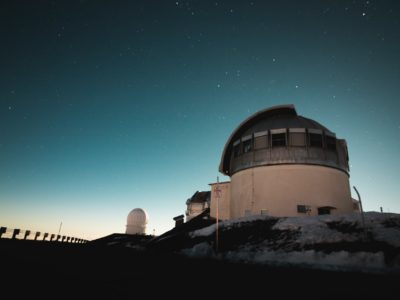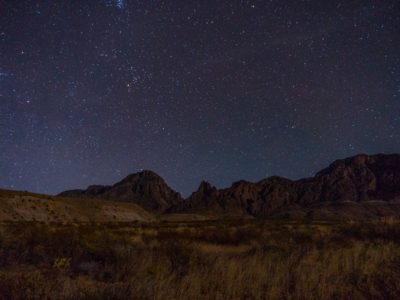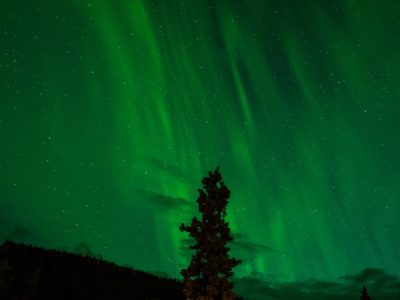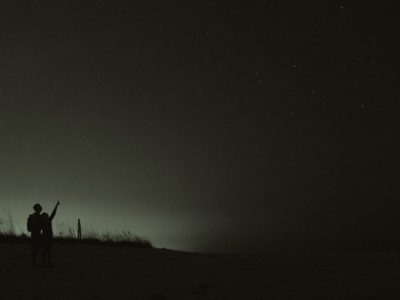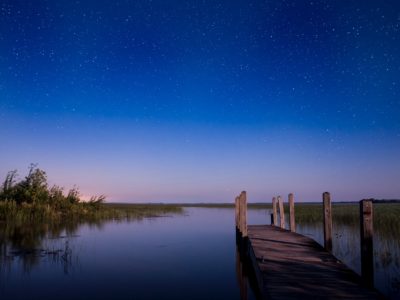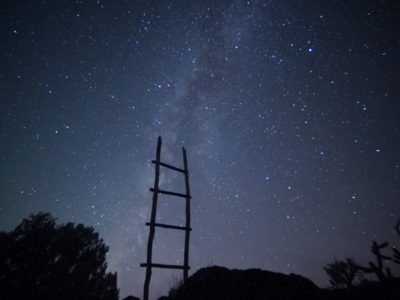Best Spots for Stunning Stargazing Honeymoons in the USA
By
Jim Campbell
 Jim Campbell
Jim is the owner of Honeymoons.com. A lifelong traveler, Jim's wanderlust has led him to spend months living on the Mayan Rivera, instruct SCUBA diving in Croatia, sail from San Diego to Hawaii, and cruise the Caribbean on a catamaran. Jim launched his honeymoon business while planning his own honeymoon in 2019. Since then, he has helped thousands of honeymooners plan their trips through his honeymoon travel agency.
Meet Our Team
| Updated on June 4, 2024 | Posted In: Honeymoon Destinations
Jim Campbell
Jim is the owner of Honeymoons.com. A lifelong traveler, Jim's wanderlust has led him to spend months living on the Mayan Rivera, instruct SCUBA diving in Croatia, sail from San Diego to Hawaii, and cruise the Caribbean on a catamaran. Jim launched his honeymoon business while planning his own honeymoon in 2019. Since then, he has helped thousands of honeymooners plan their trips through his honeymoon travel agency.
Meet Our Team
| Updated on June 4, 2024 | Posted In: Honeymoon Destinations
Stargazing is one of the simplest, most affordable, and most romantic honeymoon experiences a couple can have. The brilliance of the night sky with its stars, planets, swirling galaxies and nebulas, and fiery meteors is truly a sight to behold, and the perfect way to better appreciate your love for one another. After all, in a universe so vast, you realize how slim the chances are that you somehow were lucky enough to be born on planet Earth — and managed to find your soul mate. There’s nothing like the cosmos to remind you just how lucky you are to be here, together, and in love.
But unfortunately, urbanization is causing light pollution. As a result, there are fewer and fewer places in the world to get a truly full experience of the night sky’s brilliance. Mercifully, however, the United States is huge, so there are still spots to snuggle up beneath the stars and witness the sparkling cosmic dome above you, in all its mysterious glory. And thanks to groups like the non-profit International Dark Sky Association, people are working hard to make sure these spots are preserved for future generations.
Before we dive into the destinations, here are some general stargazing tips. First off, get cozy! Bring folding chairs, blankets, an air mattress…anything you need to really snuggle up and fully absorb yourselves in the stargazing experience. Also, give yourselves thirty minutes or so for your eyes to adjust completely to the dark. It will take some time in the dark before you can take full advantage. If you bring flashlights, make sure they have a red filter to avoid having to start over the process of adjusting fully. It’s also good practice to bring a small first aid kit, as most stargazing areas are remote, and along with minimal facilities, cell service may be limited. Finally, if you have binoculars or a portable telescope, this is the time to put them to good use!
Now, in no particular order, here are our ten favorite stargazing spots for cosmic honeymoons:
Arches National Park - Moab, Utah
Arches National Park Stargazing
The deserts of the American west are so open and remote, they provide some of the best stargazing opportunities in the world. Arches National Park in Moab, Utah is no exception to this rule. Named for its dramatic natural arch-shaped rock formations, you can camp beneath the stars here and get incredible views of a night sky like you’ve never seen it before. The cosmos appears so clearly that shooting stars are a common sight, even if you don’t visit during one of the well-known meteor showers like Leonids or Perseids.
Arches National Park Stargazing Tip
Since Arches National Park is so close to the city of Moab itself, you can stay at a hotel in town if you’d rather not spend all night camping outdoors, and still get a jaw-dropping experience. But the further you go from town, the clearer the skies will be!
Mauna Kea - Big Island, Hawaii
Mauna Kea Stargazing
Mauna Kea is a dormant Hawaiian volcano rising over 4,000 meters above sea level on Hawaii’s Big Island. And if the hike to the top is a bit much, and you’d rather just skip to the stargazing, you can drive up instead of ascending on foot (provided you have a four-wheel drive vehicle). Once you’re there, you’ll see right away why the native Hawaiians considered this a sacred mountain — so sacred, in fact, that only the highest-level spiritual leaders were allowed to actually go to the summit, as it was considered a home for Hawaiian gods. This might shock you, but from base to summit, Mauna Kea is actually the tallest mountain in the world. While Mt. Everest reaches higher above sea level, Mauna Kea is actually taller overall from top to bottom!
Maunakea Stargazing Tip:
Even if you plan on driving rather than hiking, make sure to give yourselves time to acclimatize to the altitude first. After all that elevation gain, there is a lot less oxygen to breathe, so you really need a bit of time to get used to it. Also, be careful with rental cars, as driving to the top requires 4-wheel drive, but some rental car companies don’t allow this because of the rugged terrain. Book a guided tour instead. Once you’re up there, you’re in for the experience of a lifetime, and one of the most unique stargazing spots in the USA.
Big Bend National Park - Chihuahuan Desert, Texas
Big Bend National Park Stargazing
They say everything is bigger in Texas — big ranches, big boots, big barbecue, and yes — big starry skies. Big Bend National Park is famous for having less light pollution than almost any other park in the United States, making it a perfect place for couples seeking a cosmic experience. Watch the Milky Way galaxy rise with the morning sun, pitch a tent beneath 2,000-plus visible stars (compared to just two or three hundred, at most, in a brightly-lit town or city), or rent a cottage and enjoy more amenities for your star-seeking adventure. However you do it, this is one of the best places in the country for stargazing, so make a point of a visit if you’re planning a Texas honeymoon.
Denali National Park - Denali, Alaska
Denali National Park Stargazing
Denali, Alaska serves up incredible stargazing, but with an additional twist that you can only get from a handful of other destinations in the world: the swirling psychedelic colors of the Aurora Borealis, also known as the Northern Lights. This gives it a very special place on this list. Despite the lack of light pollution, Summers in Alaska are bright, so plan your stargazing honeymoon for the fall, winter, or spring instead. A romantic getaway to stargaze beneath the Northern Lights should absolutely be on every couple’s bucket list.
Denali Stargazing Tip
You can look up Northern Lights forecasts from the University of Alaska’s Geophysical Institute ahead of time to get a better idea of when and how to plan your outing once you’ve arrived in Alaska.
Cherry Springs State Park - Coudersport, Pennsylvania
Cherry Springs State Park Stargazing
When it comes to honeymoon stargazing, why should the American west have all the fun? For eastern honeymooners, there certainly aren’t quite as many options — cities tend to be closer together here, and wide-open space is rare compared to the mind-bogglingly vast deserts of America’s more western states. But Cherry Springs State Park in Potter County, Pennsylvania is still a fantastic stargazing spot for awe-inspiring views of the night sky.
This 82-acre park is surrounded by a massive state forest, making it one of the most remote areas on the eastern seaboard. That means dark skies, and a blanket of brilliant stars, planets, and more. The park’s astronomy field sits atop a mountain surrounded by valleys and forests, blocking light from what little development does exist nearby, and offering panoramic night sky views.
Cherry Springs Stargazing Tip
For overnight viewing, honeymooners have to register ahead of time, although short-term, non-overnight stargazers can simply arrive at the park. White light is prohibited to preserve the experience for others, so make sure you bring a flashlight with a red filter.
Death Valley National Park - California
Death Valley National Park Stargazing
It may be called “Death Valley,” but there are few things more life-affirming than the seemingly infinite starry sky that couples can witness here. This vast California desert gives you an incredible view of the night sky that begins straight ahead, at the horizon, and continues in all directions. And with such dry, clean air, there is nothing in Death Valley to obscure those starry skies, unlike the atmosphere in other areas where there might be more moisture or bits of pollution.
Death Valley Stargazing Tip
Summertime in Death Valley brings absolutely blistering heat…at the time of this writing, in fact, temperatures are topping out at over 110 degrees fahrenheit. At night the temperatures drop dramatically, but we still recommend visiting during the cooler season. And bring sweaters and a cozy blanket, as it really can get chilly in the evening!
Dry Tortugas National Park - Garden Key, Florida
Dry Tortugas National Park Stargazing
For warm-weather stargazing, Florida’s Dry Tortugas National Park in the Florida Keys is a prime spot. The only catch is that there is only primitive camping allowed, meaning you have to bring all your own supplies — no glamping spots here — but the other side of that coin is that the privacy and quiet are unmatched. You’ll be in a tent on the beach, and if you’re lucky, you’ll truly feel like the only couple on Earth. So if you’re okay with a night of roughing it on your honeymoon in Florida, Dry Tortguas is the perfect place to get mind-blowing night skies.
Dry Tortugas Stargazing Tip
Brush up on your primitive camping skills before coming here, and make sure you have all the necessary equipment. As long as you can enjoy a backcountry experience, you’re in for some truly unique tropical stargazing, and won’t ever forget it!
Headlands International Dark Sky Park - Emmet County, Michigan
Stargazing in Michigan
This 600-acre nature preserve is home to bald eagles, bear, and some sensationally-dark night skies. Since it’s situated on the coast of Lake Michigan, skies here are also extremely open, with nothing to obscure them. The park is open 24/7, with no entry fee, so you don’t have to worry about budgeting this one in. Although actual camping isn’t allowed, you’re free to stay all night long. As a mega bonus of this location, it’s far enough north that, if you’re lucky, you might even catch the Aurora Borealis here.
The Headlands Stargazing Tip
There are several campgrounds between five and twenty minutes from the park, so even though camping isn’t allowed at The Headlands, there are a good number of spots nearby. They have some nice stargazing in their own right, but aren’t near the level of The Headlands. Camp nearby, stargaze to your heart’s content, and then return to your campground for a snuggle and a cozy snooze.
Bryce Canyon National Park - Bryce Canyon, Utah
Bryce Canyon National Park Stargazing
This Utah park is known as a smaller cousin of the Grand Canyon, with a seemingly endless vista of red rock spires, valleys, ampitheaters and cliffs. But once darkness falls, the real attraction is the insane night sky. The Milky Way and Andromedia galaxies swirl across a dome of over 7,000 visible stars and magnicifent nebulas, blanketing you in a jaw-dropping sight that’s sure to remind you how beautiful, and infinite, this universe truly is. Check it out on your own, keeping to the main trails for safety, or take a tour with one of the park’s “Astronomy Rangers” to guide you.
Bryce Canyon Stargazing Tip
Make the most of your trip by camping overnight. If you rent an RV you don’t have to “rough it,” and can camp in comfort while getting all the privacy you’d want on a honeymoon getaway.
Chaco Culture National Historical Park - Nageezi, New Mexico
Chaco Culture National Park Stargazing
Located in the deserts of New Mexico, Chaco Culture National Historical Park is filled with the incredible ancient ruins of the native Chacoan people that once populated the region — and because there’s so little light pollution, you’re able to experience the night skies exactly as the Chacoans themselves experienced them, thousands of years ago. Once you’ve seen it for yourselves, you realize the true magic of the universe, and realize why ancient tribes lent divine significance to the stars and planets above them.
Chaco Culture Stargazing Tip
Guided programs here typically occur on Friday and Saturday evenings. Contact the park at (505) 786-7014 to confirm the schedule when you’re planning your visit.


